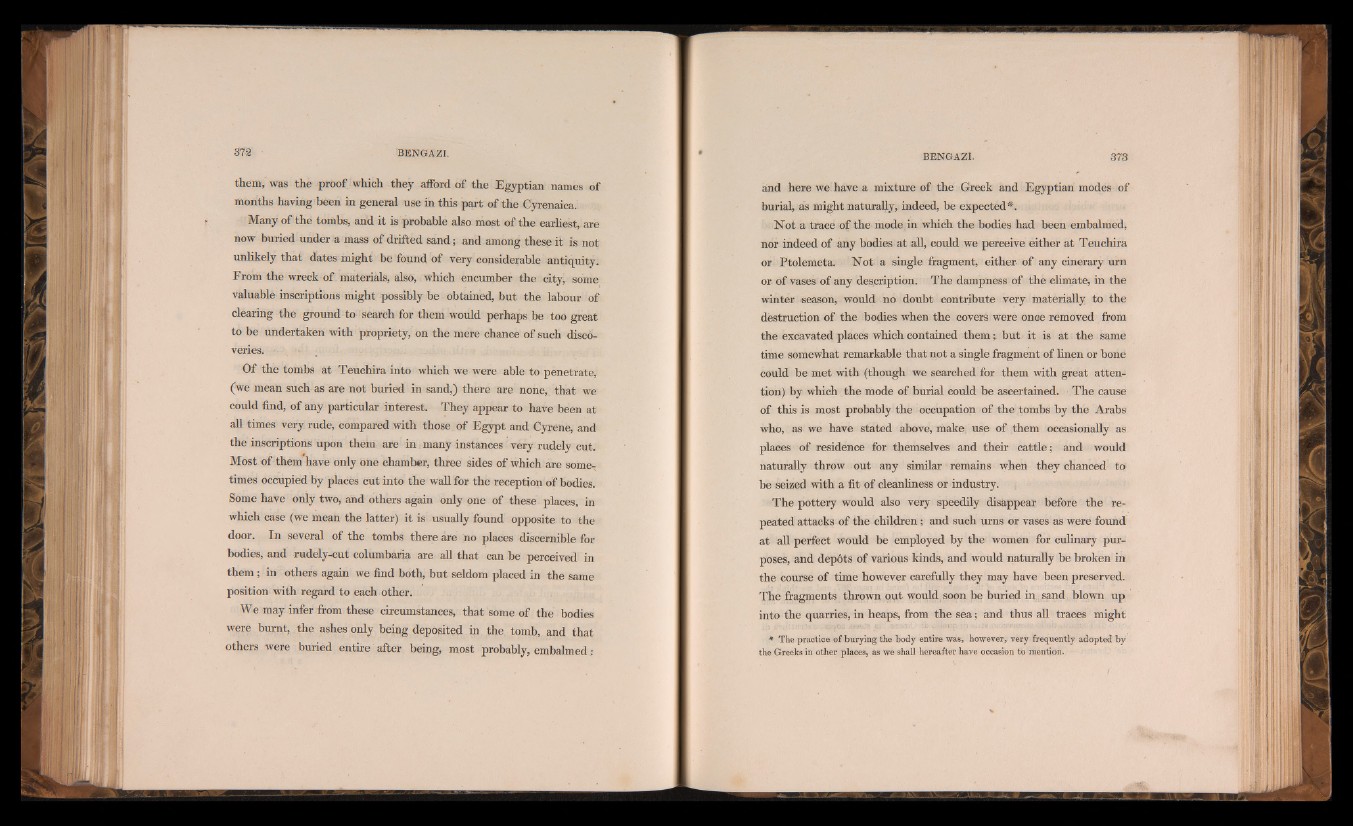
them, was the proof which they afford of the Egyptian names of
months having been in general use in this part of the Cyrenaica.
Many of the tombs, and it is probable also most of the earliest, are
now buried under a mass of drifted sand ; and among these it is not
unlikely that dates might be found of very considerable antiquity.
From the wreck of materials, also, which encumber the city, some
valuable inscriptions might possibly be obtained, but the labour of
clearing the ground to search for them would perhaps be too great
to be undertaken with propriety, on the mere chance of such discoveries.
-
Of the tombs at Teuchira into which we were able to penetrate,
(we mean such as are not buried in sand,) there are none, that we
could find, of any particular interest. They appear to have been at
all times very rude, compared with those of Egypt and Cyrene, and
the inscriptions upon them are in many instances very rudely cut.
Most of them have only one chamber, three sides of which are sometimes
occupied by places cut into the wall for the reception of bodies.
Some have only two, and others again only one of these places, in
which case (we mean the latter) it is usually found opposite to the
door. In several of the tombs there are no places discernible for
bodies, and rudely-cut columbaria are all that can be perceived in
them; in others again we find both, but seldom placed in the same
position with regard to each other.
We may infer from these circumstances, that some of the bodies
were burnt, the ashes only being deposited in the tomb, and that
others were buried entire after being, most probably, embalmed:
and here we have a mixture of the Greek and Egyptian modes of
burial, as might naturally, indeed, be expected*.
Not a trace of the mode in which the bodies had been embalmed,
nor indeed of any bodies at all, could we perceive either at Teuchira
or Ptolemeta. Not a single fragment, either of any cinerary urn
or of vases of any description. The dampness of the climate, in the
winter season, would no doubt contribute very materially to the
destruction of the bodies when the covers were onee removed from
the excavated places which contained them; but it is at the same
time somewhat remarkable that not a single fragment of linen or bone
could be met with (though we searched for them with great attention)
by which the mode of burial could be ascertained. The cause
of this is most probably the occupation of the tombs by the Arabs
who, as we have stated above, make use of them occasionally as
places of residence for themselves and their cattle; and would
naturally throw out any similar remains when they chanced to
be seized with a fit of cleanliness or industry.
The pottery would also very speedily disappear before the repeated
attacks of the children ; and such urns or vases as were found
at all perfect would be employed by the women for culinary purposes,
and dépôts of various kinds, and would naturally be broken in
the course of time however carefully they may have been preserved.
The fragments thrown out would soon be buried in . sand blown up
into the quarries, in heaps, from the sea ; and thus all traces might
* The practice of burying the body entire was, however, very frequently adopted by
the Greeks in other places, as we shall hereafter have occasion to mention.